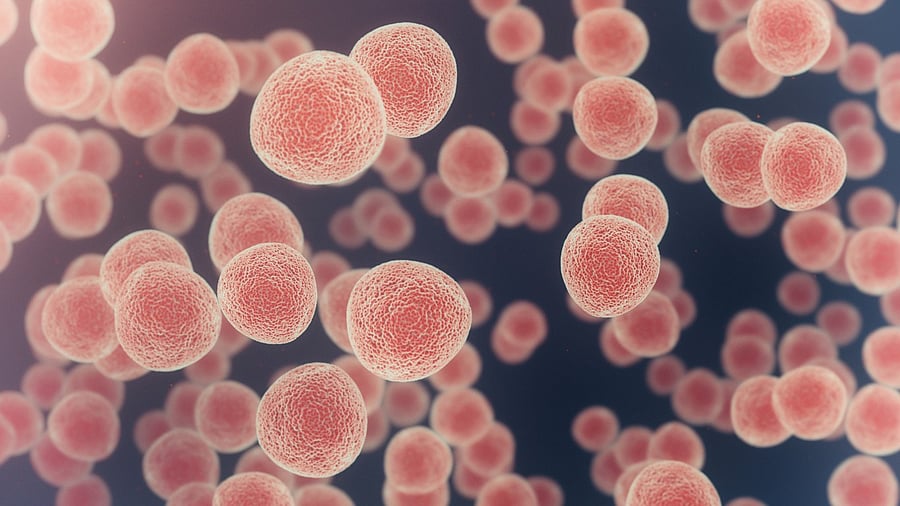
Representative image showing cancer cells.
Credit: iStock Photo
Bengaluru: In a new study, the Department of Bioengineering (BE), Indian Institute of Science (IISc), Bengaluru and collaborators showed that tweaking the spacing between cancer cells makes it more susceptible to ultrasound treatment.
Extracellular matrix (ECM) is a network consisting of extracellular macromolecules and minerals that provide structural and biochemical support to surrounding cells.
Cells have surface receptors called integrins that bind to repetitive spacings present on the ECM allowing them to grow and spread.
Ultrasound waves at 39 kHz can disrupt the cell membrane, triggering cell death in cancer cells; a relatively low-cost and non-invasive approach.
"Unlike normal cells, cancer cells do not have repair mechanisms that help them withstand the mechanical forces exerted by ultrasound waves," the researchers said in a statement, issued on Monday.
“In a normal tissue, the spacing on the ECM is around 50-70 nanometres (nm), but in the tumour microenvironment, severe choking occurs due to excessive ECM secretion, which may reduce the binding spacing to below 50 nm. We found more cancer cells being killed when the binding spacing is increased to around 50-70 nm,” explained Prof Ajay Tijore from BE and corresponding author of the study.
When ultrasound was applied to cancer cells grown on with 50 nm and 70 nm spacings, their cell membranes were found to stretch due to forces exerted by a filament protein called myosin, which triggers cell death.
“While doing these experiments, we stumbled upon literature on a drug called Cilengitide, which works by blocking integrin-ECM binding,” explained S Manasa Veena, PhD student and first author of the paper.
The team tested what happens when a very low dose of Cilengitide – about 1,000 times lower than used in previous trials -- is given along with ultrasound treatment. “Due to the drug's action, we are fooling the cancer cell into thinking that the spacing has changed. Now the cell starts developing myosin forces which triggers cancer cell death,” said Tijore.
Tijore’s team has collaborated with clinicians to test this combination approach on oral cancer tissue samples as oral cancer is a major problem in the Indian subcontinent.
